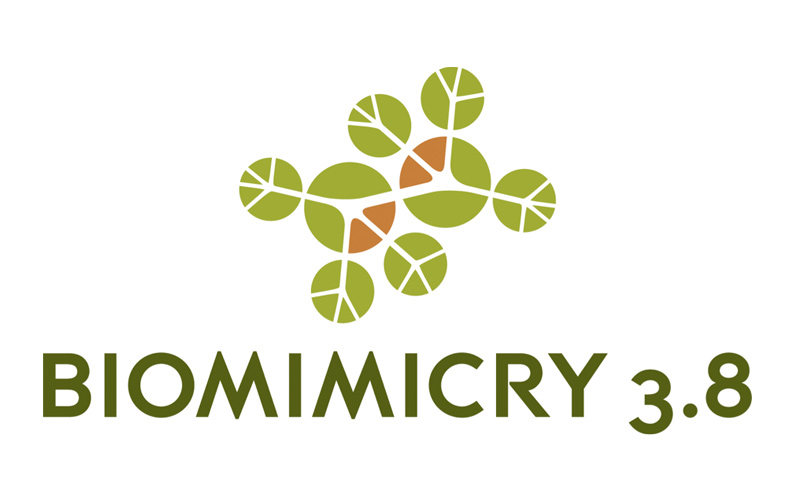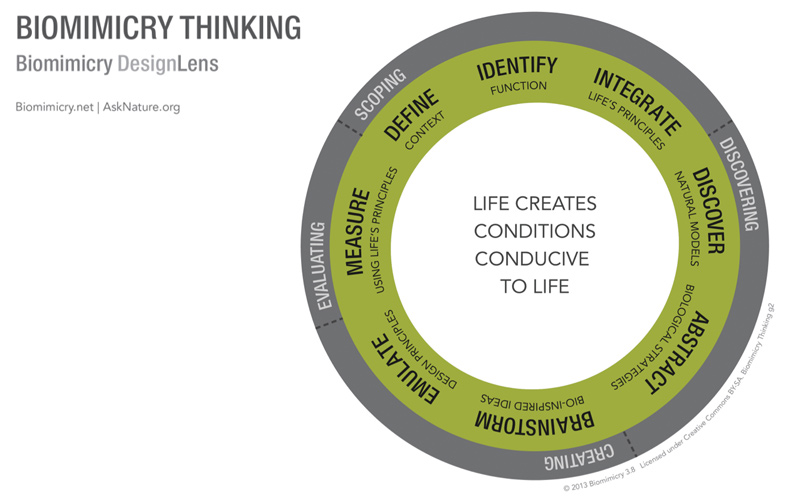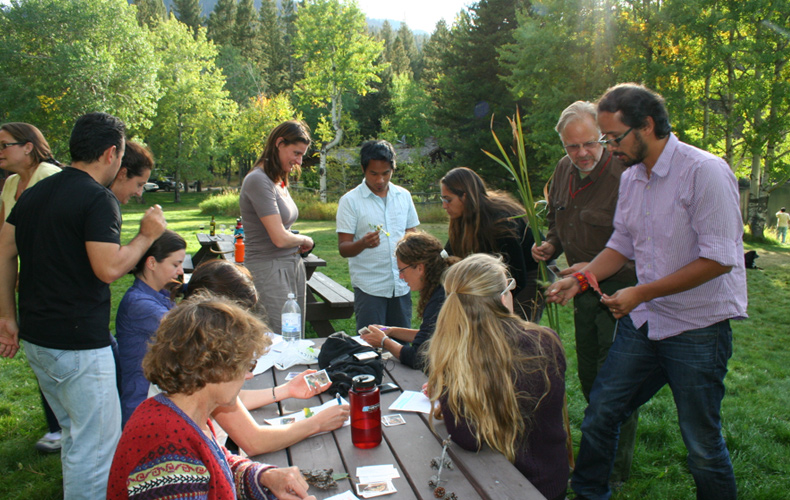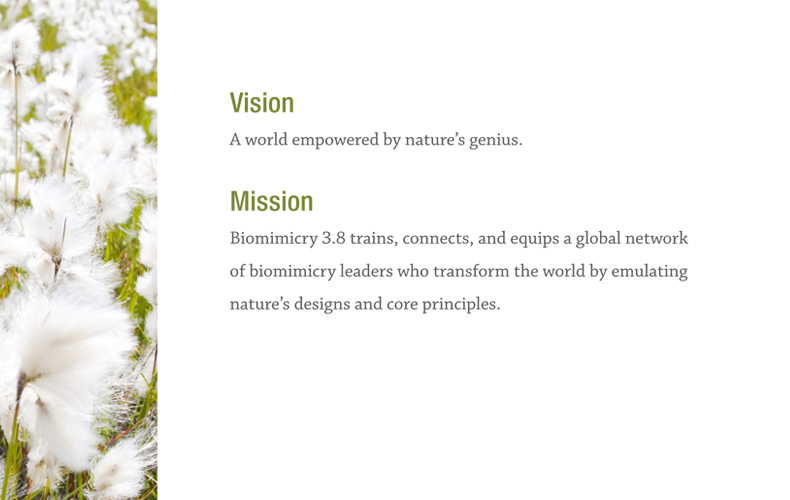Aug 19, 2013 8 Questions With: Jamie Dwyer
I first heard about the emerging field of Biomimicry a few years ago, and I’ve been fascinated ever since about how this research and design methodology drives technology and systems innovation, inspired by nature to solve complex human problems. For example, emulating dolphins’ unique frequency modulating acoustics for high performance underwater data transmission in tsunami warning systems, or analyzing bee hive honeycombs to design energy efficient, insulated glass unit shades. When I was introduced to Jamie Dwyer, a Biologist and Design Strategist at Biomimicry 3.8, I received a firsthand account of how she uses a Biomimicry DesignLens to provide a guided process for using nature’s genius to inform human design. To see the application at companies such as Airbus, Boeing, HOK, IDEO, Levi’s, and Nike, it is refreshing to hear how players are using biomimicry to disrupt their labs and boardrooms.
How did you become involved in biomimicry as a discipline and career?
I first heard the word biomimicry when I was working on my architecture thesis. I have a bachelor’s degree in biology and when I returned for a master’s degree in architecture, my classmates and professors wondered how those two disciplines fit together. In my heart, I knew these two disciplines were intertwined – something deeper than the environmental constraints of a building site. My thesis was aimed at finding this deeper connection. When I started doing research, I found that biomimicry already existed as a discipline and I immediately signed up for a week-long workshop and then completed the two-year biomimicry certification program. I’ve been consulting in biomimicry since.
How do you see the field evolving in the future?
In the near future, I see biomimicry seeping into many other disciplines. Biomimicry is often thought to be limited to architecture and industrial design, but we have been working in green chemistry, organizational development, additive manufacturing, and planning. Biomimicry, at the appropriate scale, can bring nature’s genius to any design problem. In the future I want biomimicry to be the place where all designers look for solutions.
What are some interesting applications of biomimicry in innovation, design, or architecture?
The mimicry of natural forms is comparatively straight forward – the humpback whale flipper as inspiration for a better wind turbine blade, for example. But for me, the more challenging applications of biomimicry are inspired by nature’s patterns, processes, and system connections. How can we rethink a building’s heating and cooling systems based on how the local species manages thermoregulation? How can a development function like the native ecosystem functions? I think questions like these lead to interesting applications of biomimetic process and systems thinking.
Describe a project that you are most proud of.
The staff at Biomimicry 3.8 is quite proud of the Genius of Biome report we co-authored with HOK architects. The project team chose five built environment challenge areas – water, energy, materials, social and economic – and explored some of the ways those challenges are managed at a biome level. It was a back-and-forth exploration between research and design, resulting in emulation ideation sketches. The report is just the tip of the iceberg, of course, but it is an excellent display of biomimicry at a larger scale.
What does your typical workday look like?
I try to narrow my daily focus so I’m not turning in circles every day, but in an average month I’m all over the place. I bridge between biology and design so I work in both of those disciplines as well as the space where they interface. I create reports, which involves reading and digesting scientific papers to discover strategies, find patterns and articulate design principles. I work directly with clients to teach the biomimicry methodology and facilitate brainstorming workshops. Behind the scenes, I manage client projects and I develop innovation tools. I’m definitely not bored.
How has biomimicry changed your design process?
The biomimicry methodology adds a biomimicry lens to each of the design phases. From honing in on the real project challenges, focusing on function and context, and then learning how other species are accomplishing similar challenges, biomimicry has definitely added an important layer to my design process. Biomimicry has given my projects meaningful goals and strategies. I can look to nature as a measurement tool to create project goals based on how nature functions. It’s powerful for the project team to be able to focus on the design’s functionality.
What inspires you?
Nature!
Where is your favorite part of the world?
I find every bit of the earth to be amazing. I especially like extreme habitats where the creatures surviving there seem to exhibit the essence of what is needed in that particular place.
For more great Imprint content, be sure to follow us on Twitter, Instagram, and Facebook!






